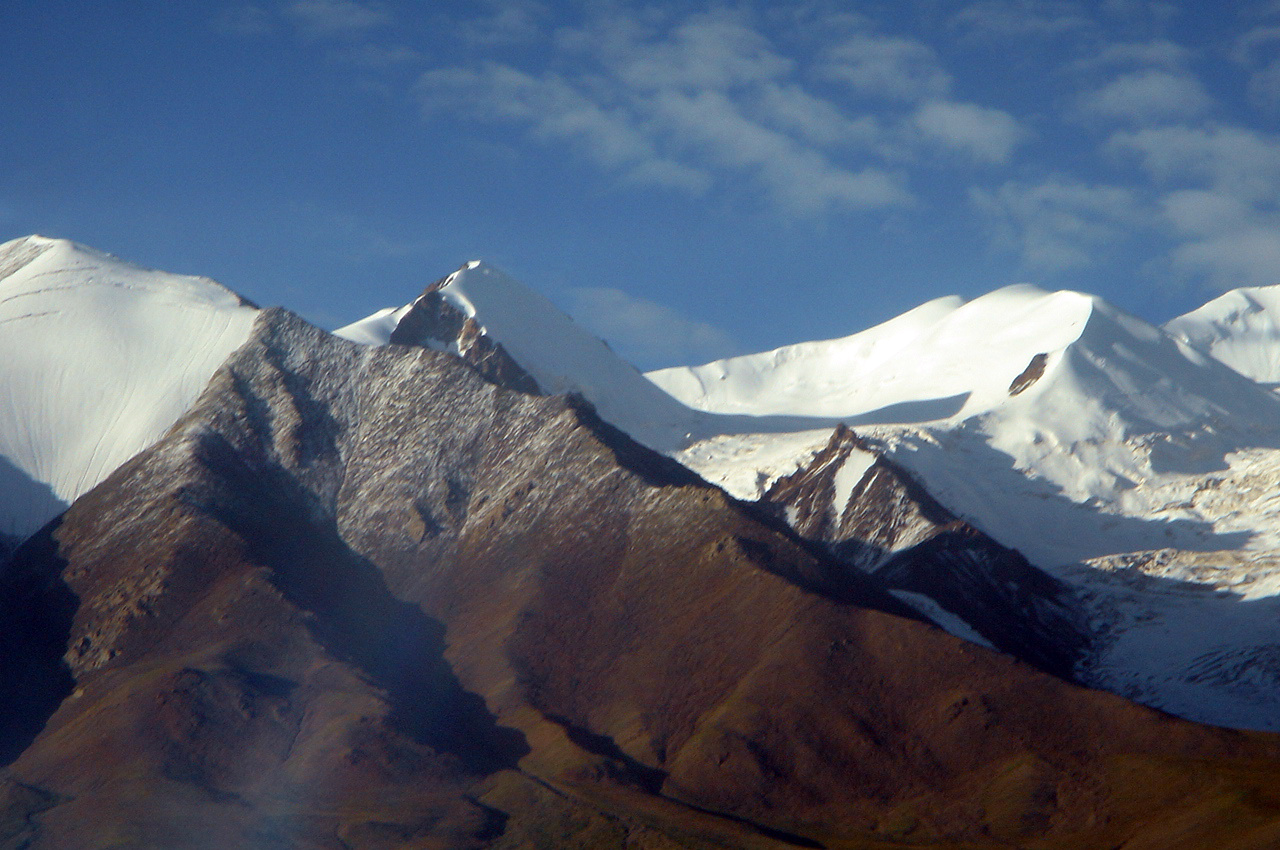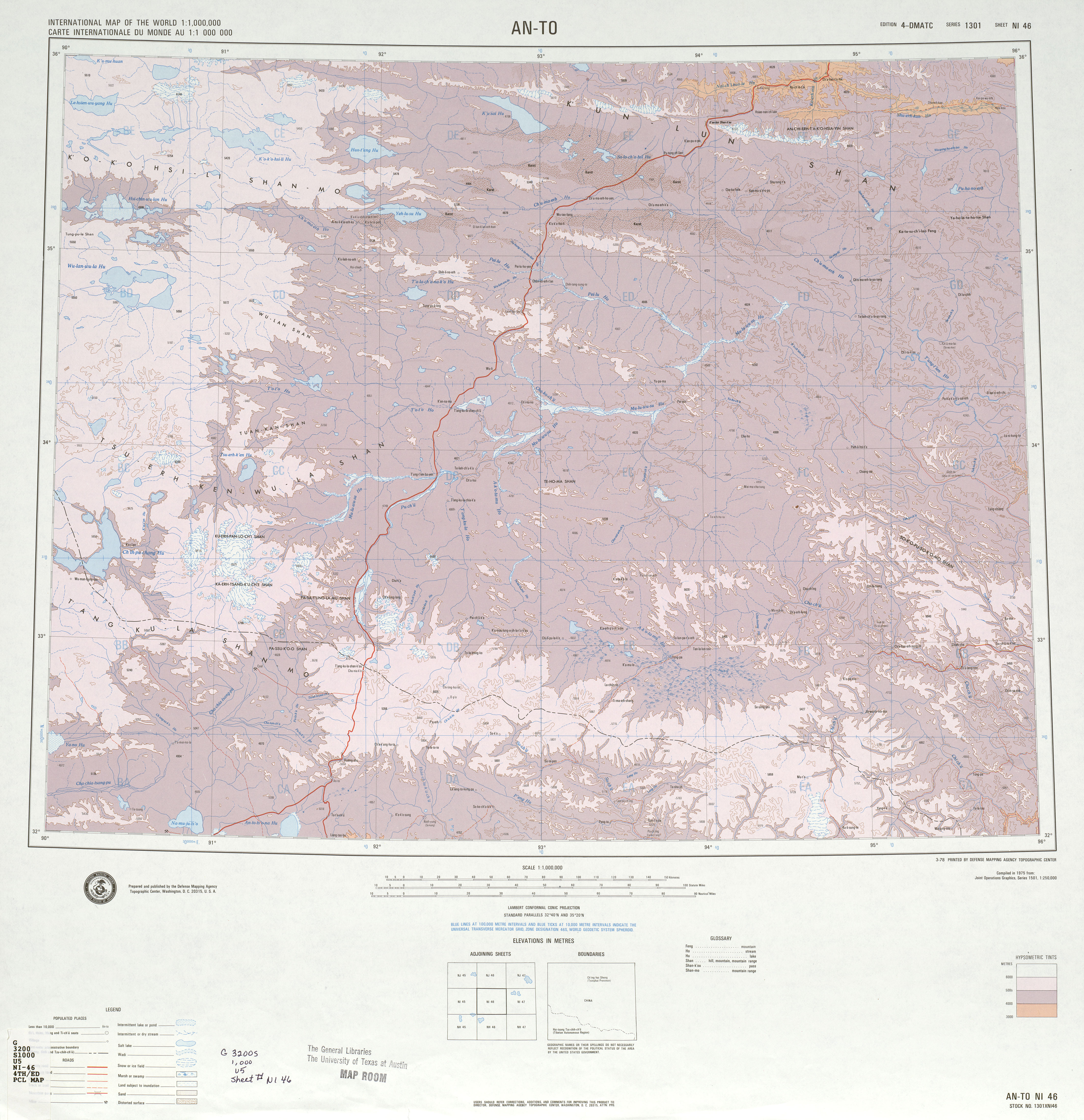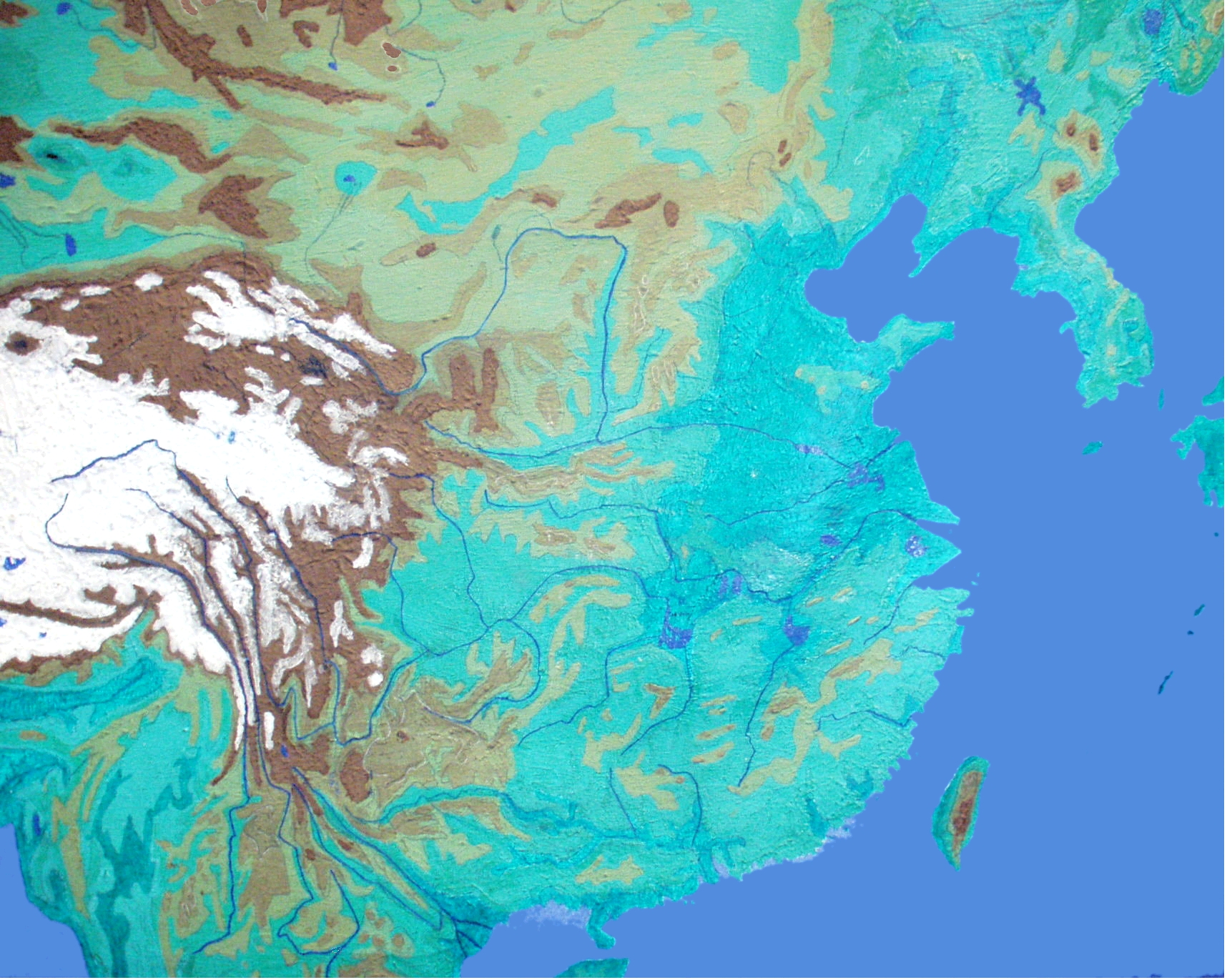|
Tanggulashan Town
Tanggulashan (, ), or Dangla Town, is a town in the southwest of Qinghai province, China. It forms the southern exclave of the county-level city of Golmud, in Haixi Mongol and Tibetan Autonomous Prefecture, partially administrated by Amdo County, Tibet Autonomous Region since 1963 and still officially a territory of Yushu Prefecture, Qinghai under trust administration of Golmud, Haixi Prefecture, Qinghai. Before the local administrative reform of 2005, it was known as Tanggula Township (). It is the only place in China simultaneously under jurisdiction of three prefectures. The town spans an area of approximately , and has a population of 1,750 as of 2020. Toponymy The town's name is Tibetan for "mountain that eagles cannot fly over". History On the eve of the annexation of Tibet by China, a local rebellion broke out in nearby Yushu, causing many members of the Duoma tribe (), a tribe of Tibetans, to flee to present-day Tanggulashan. In the early 1960s, the administrati ... [...More Info...] [...Related Items...] OR: [Wikipedia] [Google] [Baidu] |
Postal Code Of China
Postal codes in the China, People's Republic of China () are postal codes used by China Post for the delivery of letters and goods within mainland China. China Post uses a six-digit all-numerical system with four tiers: the first tier, composed of the first two digits, show the provinces of China, province, province-equivalent direct-controlled municipalities of China, municipality, or autonomous regions of China, autonomous region; the second tier, composed of the third digit, shows the postal zone within the province, municipality or autonomous region; the fourth digit serves as the third tier, which shows the postal office within prefectures of the People's Republic of China, prefectures or prefecture-level city, prefecture-level cities; the last two digits are the fourth tier, which indicates the specific mailing area for delivery. The range 000000–009999 was originally marked for Taiwan (The Republic of China) but is not used because it not under the control of the People' ... [...More Info...] [...Related Items...] OR: [Wikipedia] [Google] [Baidu] |
Lhasa Tibetan
Lhasa Tibetan or Standard Tibetan is a standardized dialect of Tibetan spoken by the people of Lhasa, the capital of the Tibetan Autonomous Region. It is an official language of the Tibet Autonomous Region. In the traditional "three-branched" classification of the Tibetic languages, the Lhasa dialect belongs to the Central Tibetan branch (the other two being Khams Tibetan and Amdo Tibetan). In terms of mutual intelligibility, speakers of Khams Tibetan are able to communicate at a basic level with Lhasa Tibetan, while Amdo speakers cannot. Both Lhasa Tibetan and Khams Tibetan evolved to become tonal and do not preserve the word-initial consonant clusters, which makes them very far from Classical Tibetan, especially when compared to the more conservative Amdo Tibetan. Registers Like many languages, Lhasa Tibetan has a variety of language registers: * ( Wylie: , literally " demotic language"): the vernacular speech. * ( Wylie: , "honorifics or deference, courtesy"): the ... [...More Info...] [...Related Items...] OR: [Wikipedia] [Google] [Baidu] |
Yangtze
The Yangtze or Yangzi ( or ) is the longest river in Eurasia and the third-longest in the world. It rises at Jari Hill in the Tanggula Mountains of the Tibetan Plateau and flows including Dam Qu River the longest source of the Yangtze, in a generally easterly direction to the East China Sea. It is the fifth-largest primary river by discharge volume in the world. Its drainage basin comprises one-fifth of the land area of China, and is home to nearly one-third of the country's population. The Yangtze has played a major role in the history, culture, and economy of China. For thousands of years, the river has been used for water, irrigation, sanitation, transportation, industry, boundary-marking, and war. The Yangtze Delta generates as much as 20% of China's GDP, and the Three Gorges Dam on the Yangtze is the largest hydro-electric power station in the world. In mid-2014, the Chinese government announced it was building a multi-tier transport network, comprising railway ... [...More Info...] [...Related Items...] OR: [Wikipedia] [Google] [Baidu] |
Tuotuo River
The Ulan Moron (, , lit. "Red River"; zh, 乌兰木伦, p ), Mar Qu ( Tibetan), or Tuotuo River (, p ''Tuótuó Hé'', lit. "Tearful River";Powers, John & al. ''Historical Dictionary of Tibet''p. 155 Scarecrow Press (Plymouth), 2012. Accessed 14 August 2013. ) is the second longest source of the Yangtze River after Dangqu River, with a total length of long, located in Qinghai province in the People's Republic of China. The Ulan Moron begins as melt-off from the Geladandong glaciers and runs to a confluence with the Dangqu or Dam Chu River, where they form the Tongtian River, which subsequently becomes the Yangtze River. Although the Dangqu has been found to be the longest source of the Yangtze under the usual modern criteria, the Ulan Moron has been traditionally regarded as the main river and source. It belongs to the East China Sea watershed basin. See also *Yangtze River The Yangtze or Yangzi ( or ) is the longest river in Eurasia and the ... [...More Info...] [...Related Items...] OR: [Wikipedia] [Google] [Baidu] |
Sanjiangyuan National Nature Reserve
The Sanjiangyuan ( zh, c=三江源, l=Source of Three Rivers), is an area of the Tibetan Plateau in Qinghai province, China which contains the headwaters of three great rivers of Asia: the Yellow, the Yangtze, and the Mekong. Parts of the area were protected as the Sanjiangyuan National Nature Reserve (SNNR), also called the Three Rivers Nature Reserve. The reserve consisted of 18 subareas, and each contained three zones which were managed with differing degrees of strictness. In 2015, the Chinese government decided to implement a new national park system; Sanjiangyuan National Park was the first national park to be established in the pilot program in late 2021. Along with wetland and waters protection, other ecological values, such as grassland, forest, and wildlife enhancement, have also been presented as goals. To advance the goals of the SNNR uncontrolled or poorly managed mining, logging, hunting, and grazing have been curtailed. Foreign and other mining firms have replaced ... [...More Info...] [...Related Items...] OR: [Wikipedia] [Google] [Baidu] |
Yangtze River
The Yangtze or Yangzi ( or ) is the longest river in Eurasia and the third-longest in the world. It rises at Jari Hill in the Tanggula Mountains of the Tibetan Plateau and flows including Dam Qu River the longest source of the Yangtze, in a generally easterly direction to the East China Sea. It is the fifth-largest primary river by discharge volume in the world. Its drainage basin comprises one-fifth of the land area of China, and is home to nearly one-third of the country's population. The Yangtze has played a major role in the history, culture, and economy of China. For thousands of years, the river has been used for water, irrigation, sanitation, transportation, industry, boundary-marking, and war. The Yangtze Delta generates as much as 20% of China's GDP, and the Three Gorges Dam on the Yangtze is the largest hydro-electric power station in the world. In mid-2014, the Chinese government announced it was building a multi-tier transport network, comprising railways, ... [...More Info...] [...Related Items...] OR: [Wikipedia] [Google] [Baidu] |
Ulan Moron
The Ulan Moron (, , lit. "Red River"; zh, 乌兰木伦, p ), Mar Qu ( Tibetan), or Tuotuo River (, p ''Tuótuó Hé'', lit. "Tearful River";Powers, John & al. ''Historical Dictionary of Tibet''p. 155 Scarecrow Press (Plymouth), 2012. Accessed 14 August 2013. ) is the second longest source of the Yangtze River after Dangqu River, with a total length of long, located in Qinghai province in the People's Republic of China. The Ulan Moron begins as melt-off from the Geladandong glaciers and runs to a confluence with the Dangqu or Dam Chu River, where they form the Tongtian River, which subsequently becomes the Yangtze River. Although the Dangqu has been found to be the longest source of the Yangtze under the usual modern criteria, the Ulan Moron has been traditionally regarded as the main river and source. It belongs to the East China Sea The East China Sea is a marginal sea of the Western Pacific Ocean, located directly offshore from East China. ... [...More Info...] [...Related Items...] OR: [Wikipedia] [Google] [Baidu] |
Geladaindong Peak
Geladaindong Peak (also spelled Geladandong, Geladaintong or Kolha Dardong) is a snow-covered mountain (or massif) located in Southwestern Qinghai Province of China near the border of Tibet Autonomous Region. It is the tallest mountain in the Tanggula Mountain Range of the Tibetan Plateau with an elevation of above sea level. The traditional source of the Yangtze River, begins with glaciers on its surface. The Yangtze's longest source, however, lies away at the head of the Dam Qu River. The mountain's name is Geladaindong in the Tibetan language. The name in Chinese is 各 拉 丹 冬 (Pinyin: Gèlādāndōng) or 各 拉 丹 冬 峰 (Pinyin: Gèlādāndōng Fēng, literally "Geladandong Peak"). Location Geladaindong is located in the administrative unit known as Tanggula Town: an exclave of Haixi Prefecture, in the middle section of Tanggula Shan (the Tanggula Mountain Range). The Geladaindong Peak is encircled by over twenty high peaks exceeding in height. It is a ... [...More Info...] [...Related Items...] OR: [Wikipedia] [Google] [Baidu] |
Gyêgu
Gyêgu Subdistrict, formerly a part of the Gyêgu or Jiegu town is a township-level division in Yushu, Yushu TAP, Qinghai, China. The name Gyêgu is still a common name for the Yushu city proper, which include Gyêgu subdistrict and three other subdistricts evolved from the former Gyêgu town. The four subdistricts altogether forms a modern town which developed from the old Tibetan trade mart called Jyekundo or Gyêgumdo in Tibetan and most Western sources. The town is also referred to as Yushu, synonymous with the prefecture of Yushu and the city of Yushu. Name The present name Gyêgu (Jiegu) (; also spelled ''Jyegu'') is derived from Gyêgudo (, ZWPY: ''Gyêgumdo'', Wylie: ''skye dgu mdo'' or ''skye rgu mdo''; ). The Tibetan designation ''Gyêgumdo'' indicates that it is a place where one valley opens into another one (''mdo''), here formed by two tributaries of the Batang River, Za Qu (''rdza chu'') and Bai Qu (Bä Qu, ''dpal chu''). Since Gyêgu (''skye dgu'') also m ... [...More Info...] [...Related Items...] OR: [Wikipedia] [Google] [Baidu] |
TanggulaShan
Tanggulashan (, ), or Dangla Town, is a town in the southwest of Qinghai province, China. It forms the southern exclave of the county-level city of Golmud, in Haixi Mongol and Tibetan Autonomous Prefecture, partially administrated by Amdo County, Tibet Autonomous Region since 1963 and still officially a territory of Yushu Prefecture, Qinghai under trust administration of Golmud, Haixi Prefecture, Qinghai. Before the local administrative reform of 2005, it was known as Tanggula Township (). It is the only place in China simultaneously under jurisdiction of three prefectures. The town spans an area of approximately , and has a population of 1,750 as of 2020. Toponymy The town's name is Tibetan for "mountain that eagles cannot fly over". History On the eve of the annexation of Tibet by China, a local rebellion broke out in nearby Yushu, causing many members of the Duoma tribe (), a tribe of Tibetans, to flee to present-day Tanggulashan. In the early 1960s, the administrati ... [...More Info...] [...Related Items...] OR: [Wikipedia] [Google] [Baidu] |
Defense Mapping Agency
The National Geospatial-Intelligence Agency (NGA) is a combat support agency within the United States Department of Defense whose primary mission is collecting, analyzing, and distributing geospatial intelligence (GEOINT) to support national security. Founded in 1996 as the National Imagery and Mapping Agency (NIMA), it changed names in 2003. It is a member of the United States Intelligence Community. NGA headquarters, also known as NGA Campus East or NCE, is located at Fort Belvoir North Area in Springfield, Virginia. At , it is the third-largest government building in the Washington metropolitan area after the Pentagon and the Ronald Reagan Building. The agency also operates NGA Campus West, or NCW, in St. Louis, Missouri, and support and liaison offices worldwide. NGA also helps respond to natural and manmade disasters, helps with security planning for major events such as the Olympic Games, disseminates maritime safety information, and gathers data on climate change. The ... [...More Info...] [...Related Items...] OR: [Wikipedia] [Google] [Baidu] |








